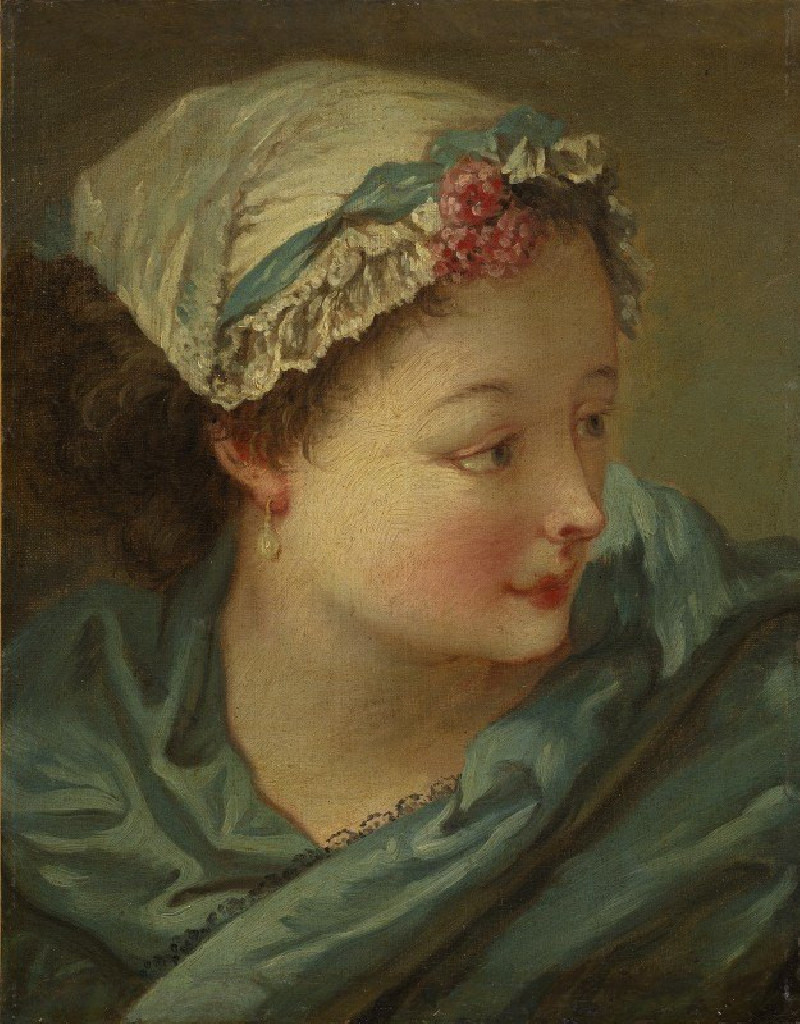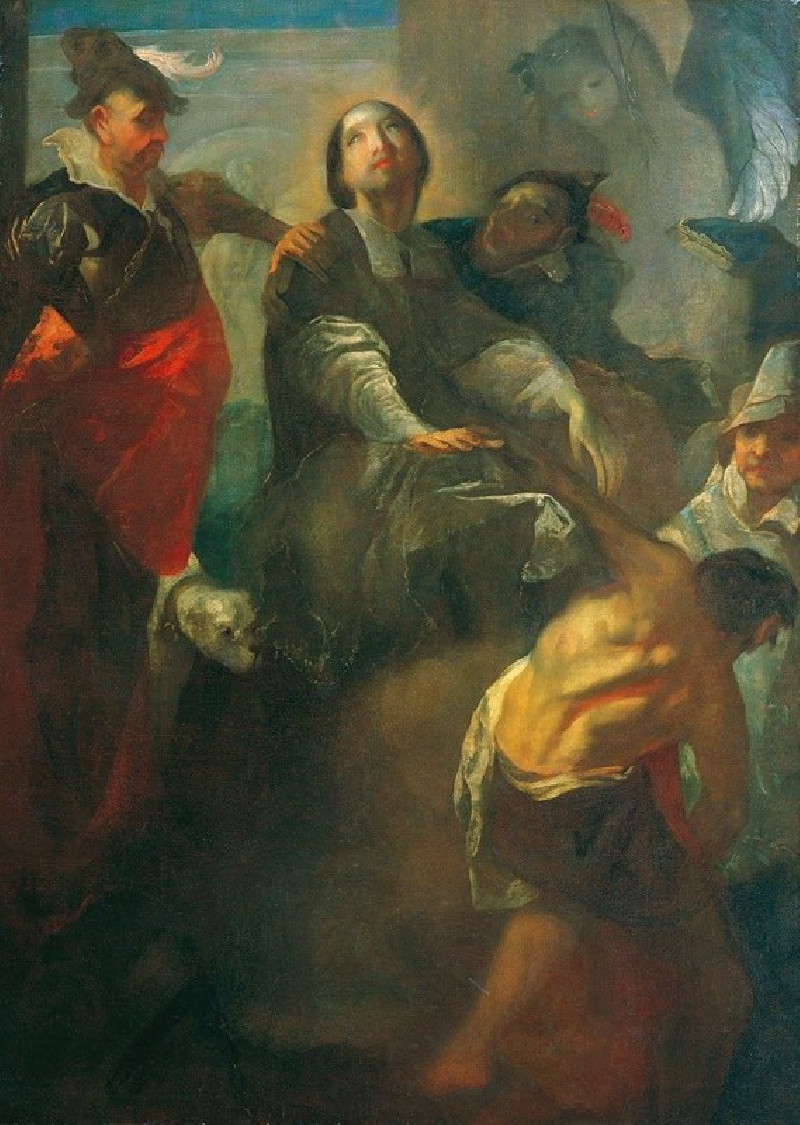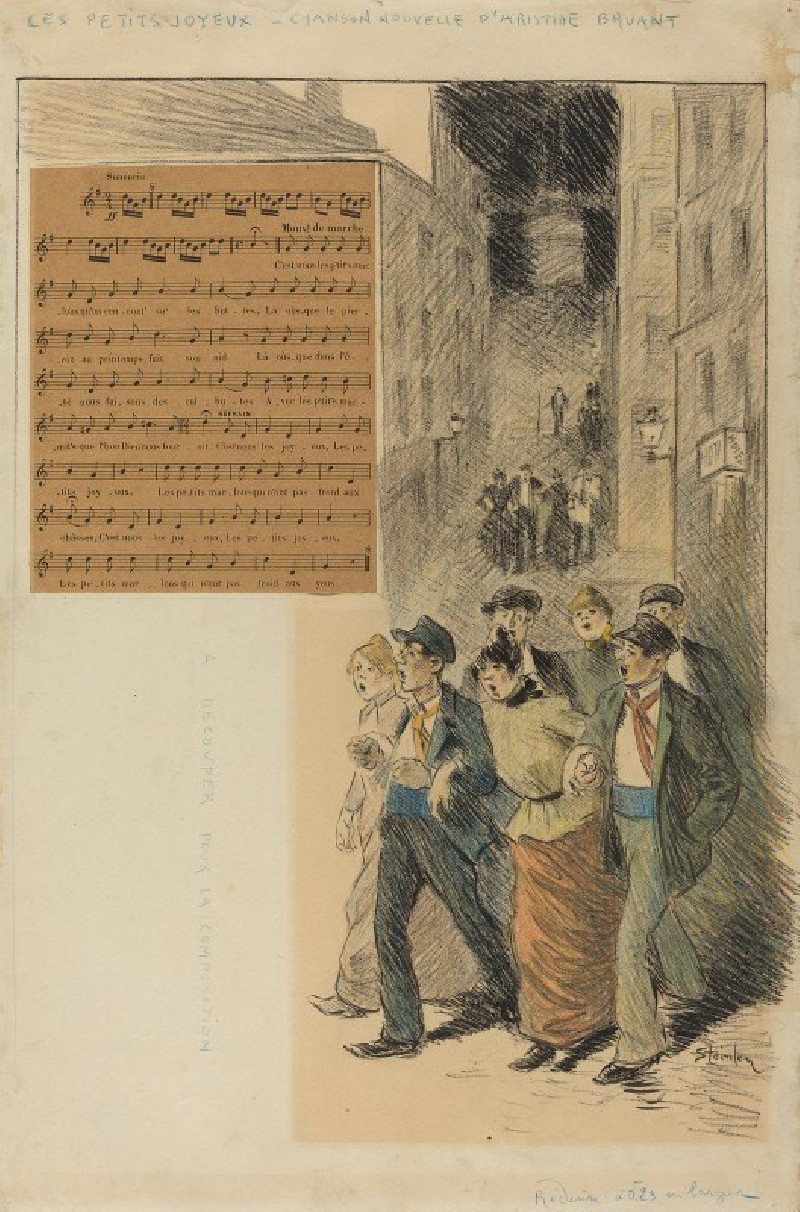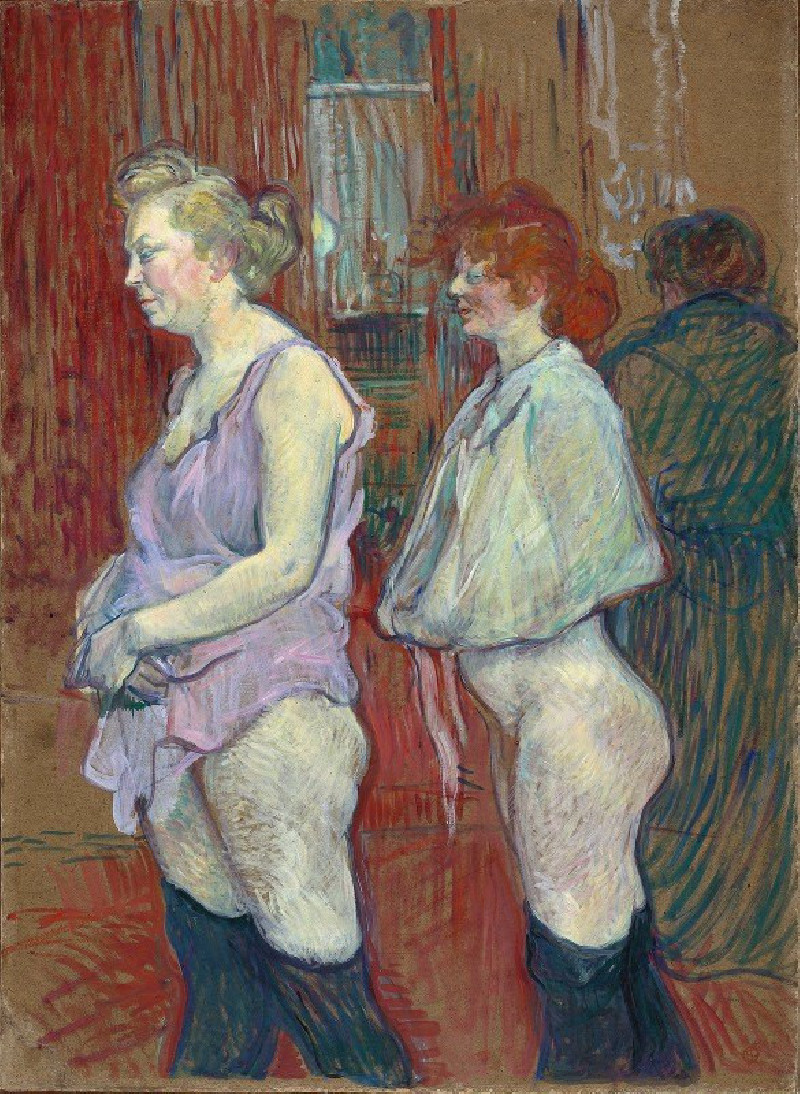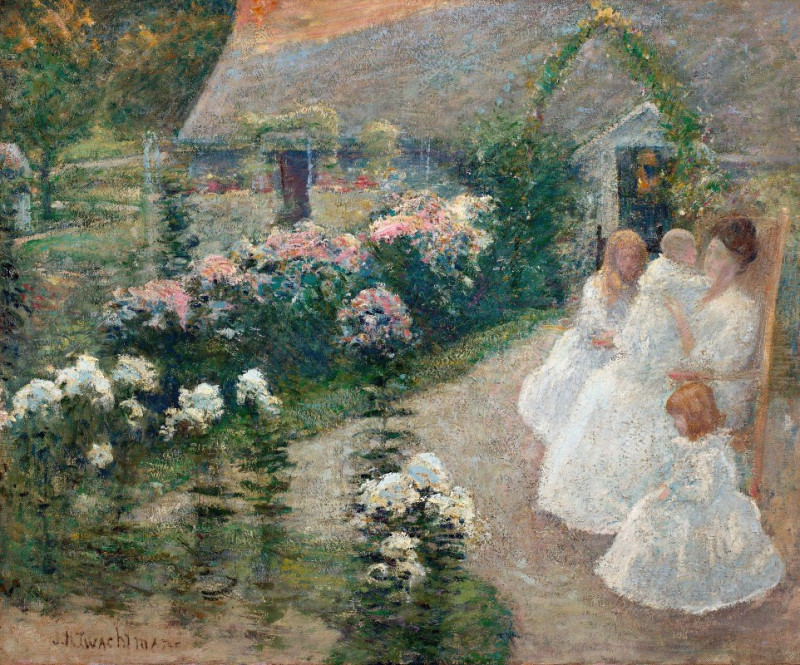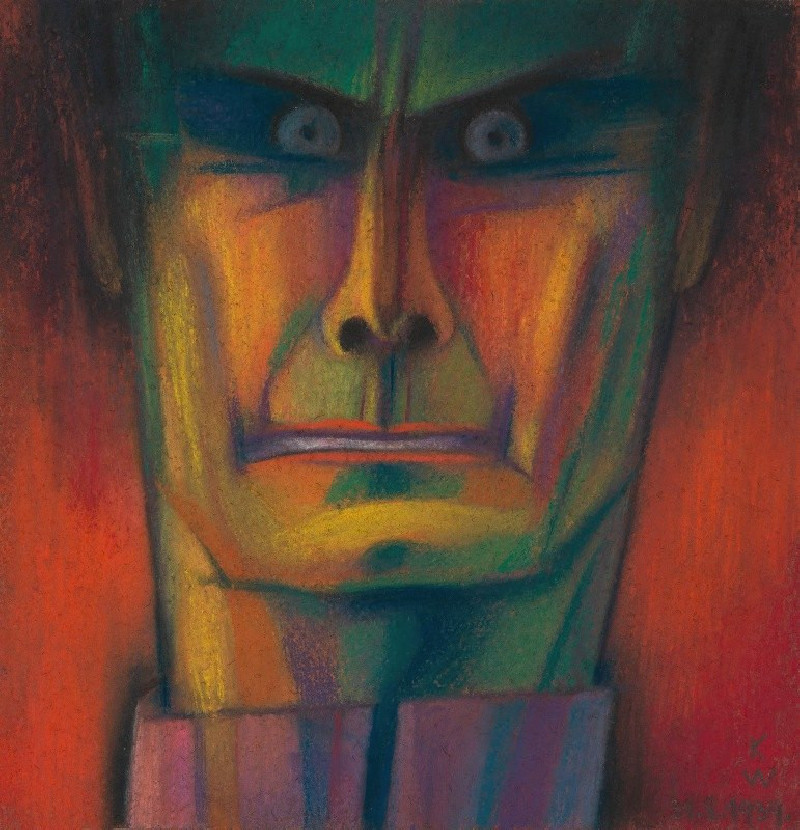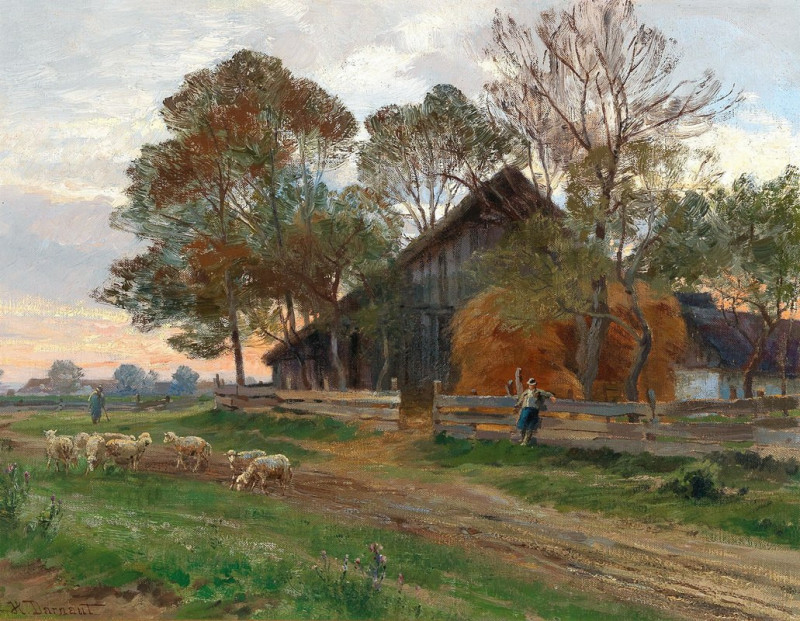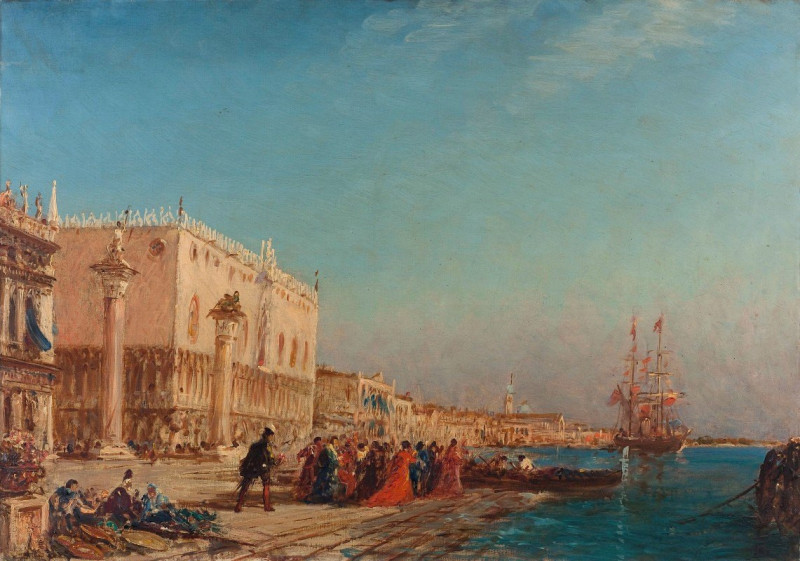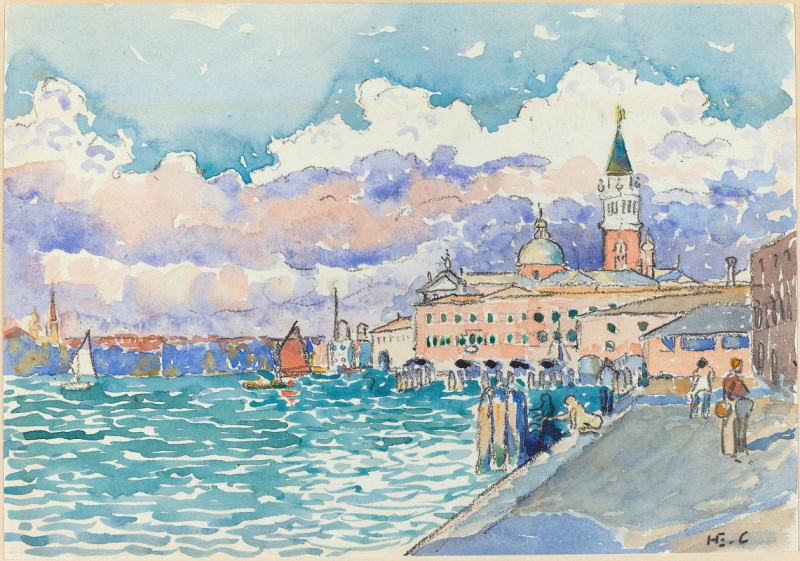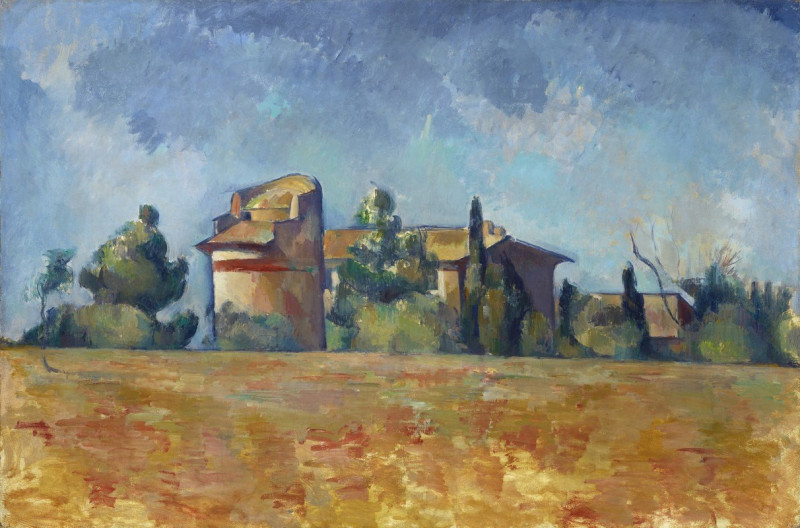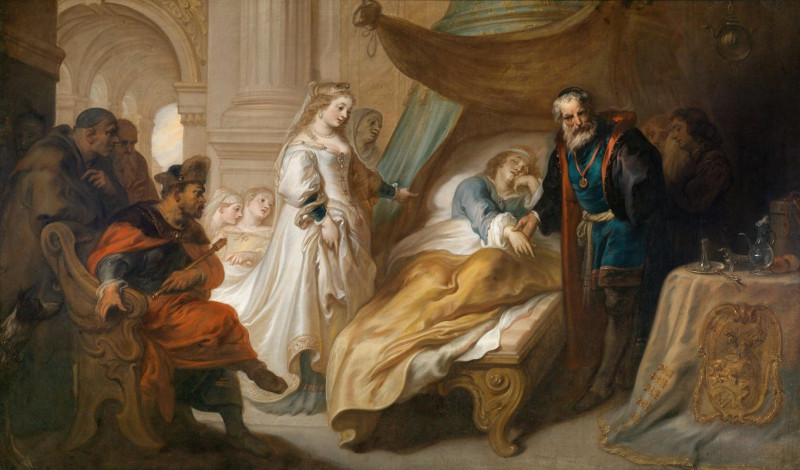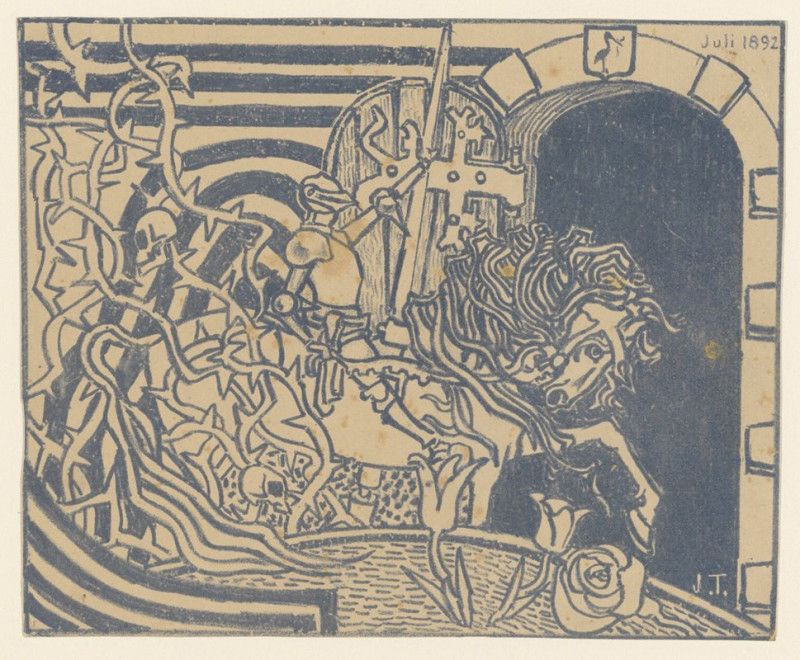The Public Garden at Pontoise (1874)
Technique: Giclée quality print
Recommended by our customers
More about this artwork
"The Public Garden at Pontoise" is a captivating example of Camille Pissarro's impressionist approach, capturing the everyday life and vibrant atmosphere of a public garden in Pontoise, a small town northwest of Paris where Pissarro lived for several years. This painting, created in 1874, showcases Pissarro’s skill in using light, shade, and color to depict landscape and human activity in harmonious coexistence.In this serene scene, we observe various townspeople engaged in leisurely activities. The garden is lush and verdant, filled with flourishing trees and bursts of colorful blooms on a gentle slope. The composition is airy and open, inviting the eye to wander through different groups of figures: women in long, flowing dresses, men in hats, and children playing. A woman in a striking blue dress strolls confidently towards the viewer, perfectly embodying the leisurely pace and calm ethos of a day in the park.To the left, a pathway leads the gaze toward the distant scenery, hinting at the expansive landscape beyond the park. The tree in the foreground and the taller trees framing the scene add depth, creating a naturalistic and immersive experience. The brushwork is loose and expressive, characteristic of the Impressionist style, allowing the texture of the paint and the canvas to contribute to the vibrancy of the scene.
Delivery
Returns
Blessed are they who see beautiful things in humble places where other people see nothing. — Camille Pissarro
Camille Pissarro (1830-1903) was born on St.Thomas (now the US Virgin Islands) to a Portuguese father and a Dominican mother. He went to Paris to study art at Ecole des Beaux-Arts. He was an early pioneer of pointillism and neo-impressionism and later became a mentor of many famous impressionist painters including Cezanne, Manet, Renoir, and Gauguin. His paintings depicted rural and urban French landscapes and lifestyle. Many of his works politically captured images of peasants and laborers. Today, he is considered the father of impressionism.
































